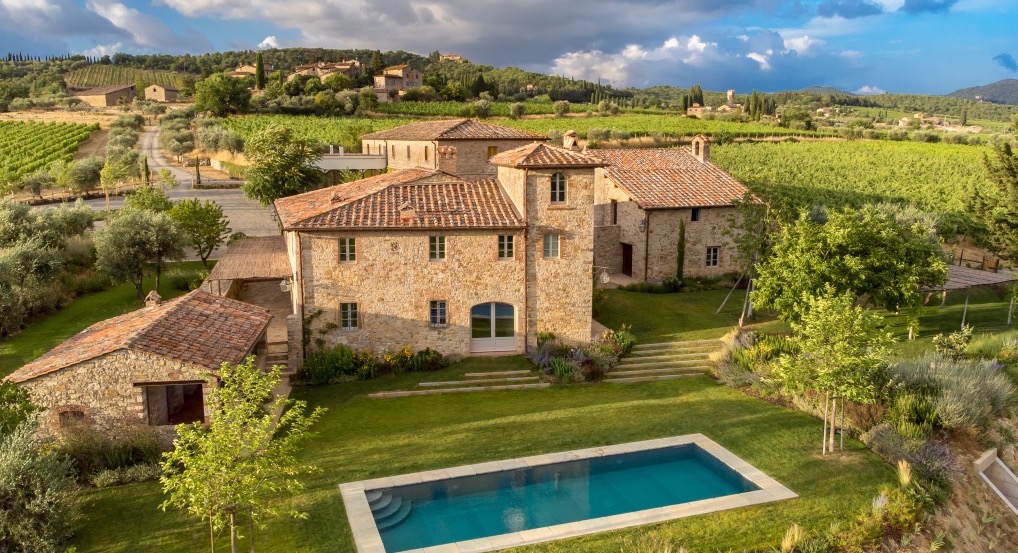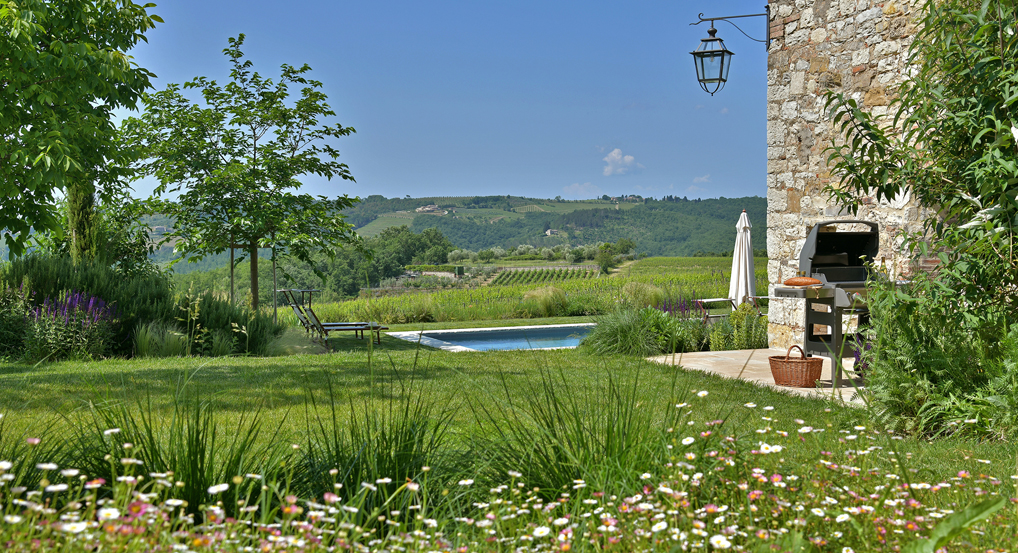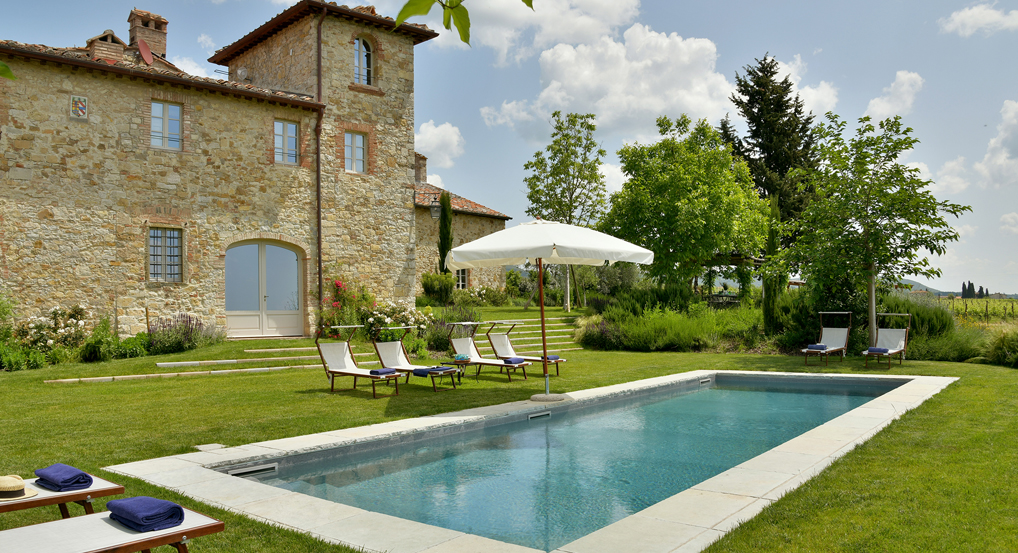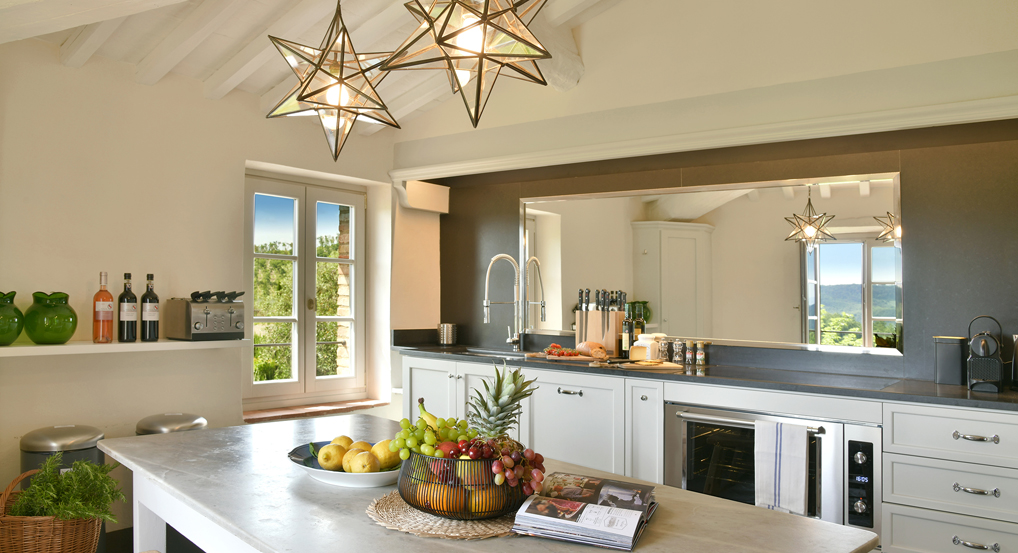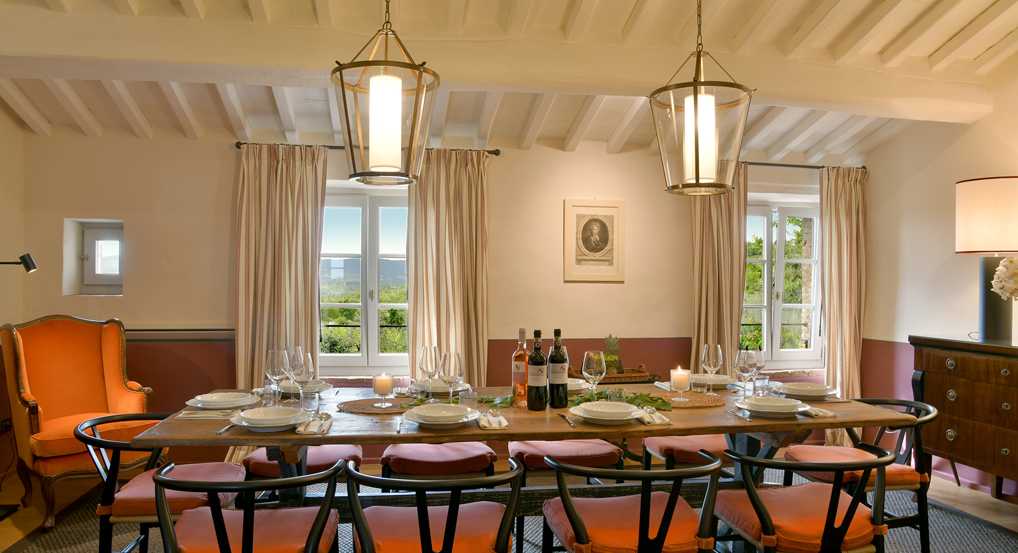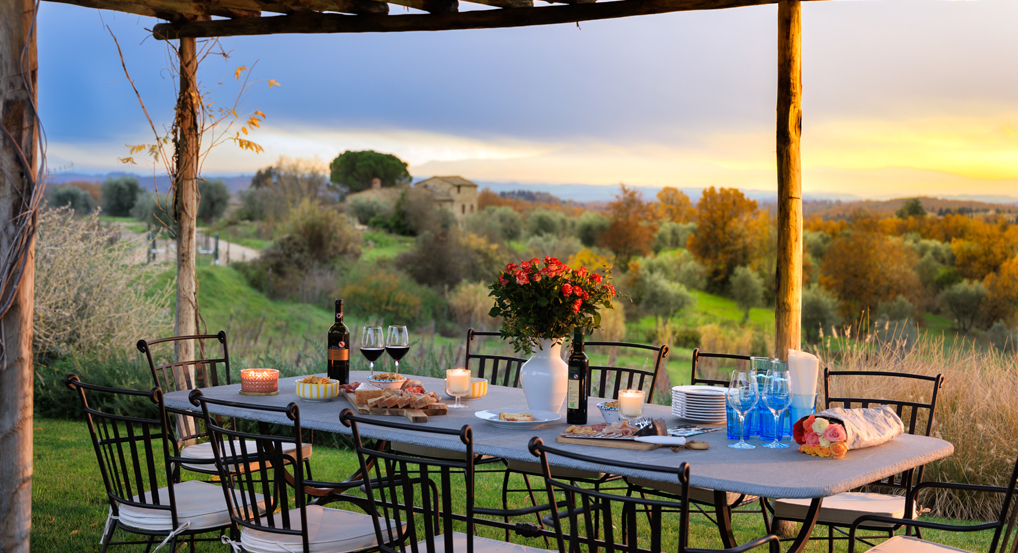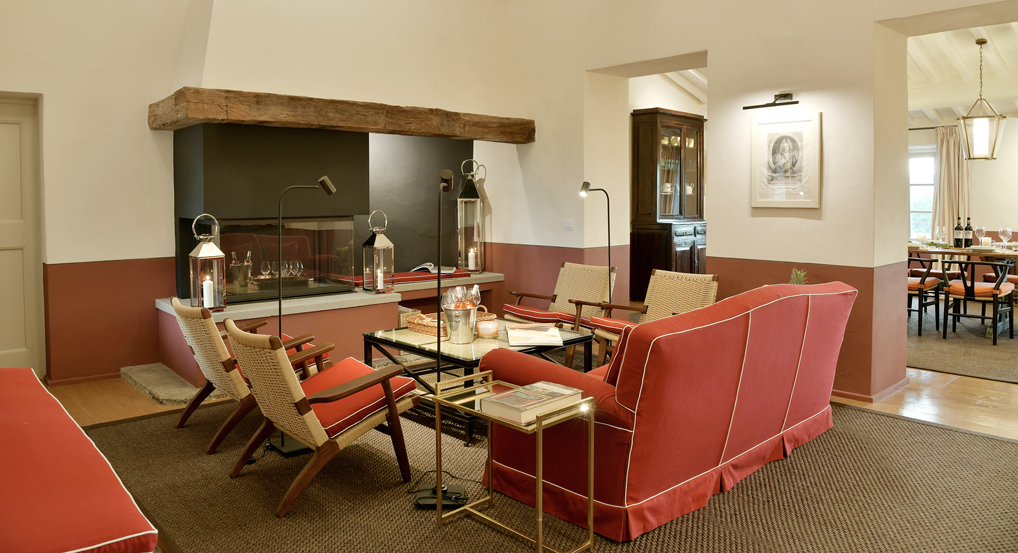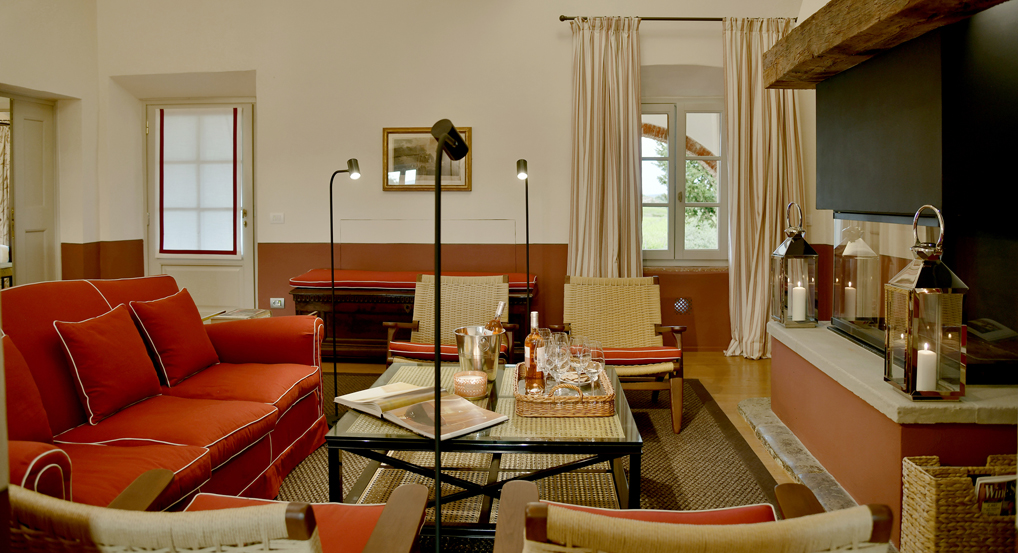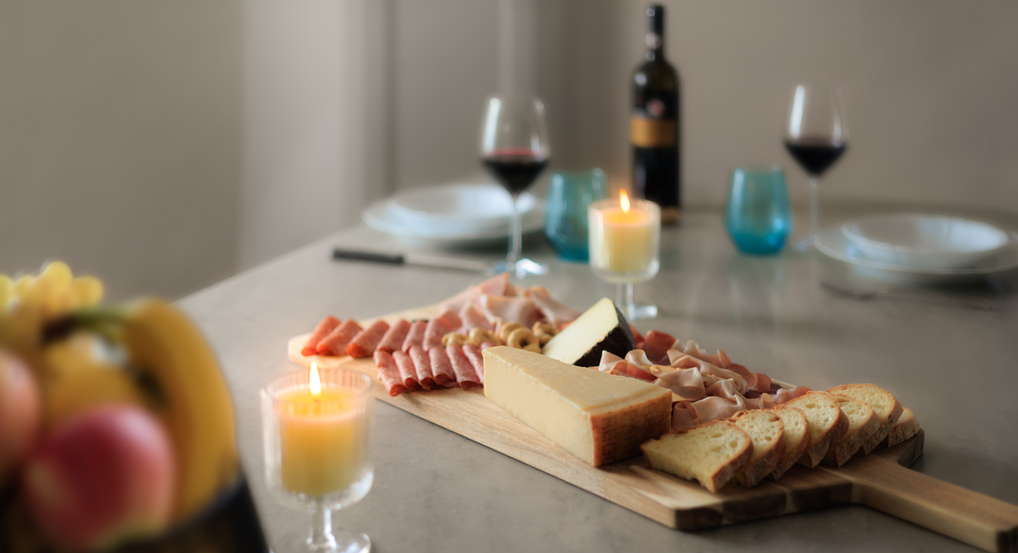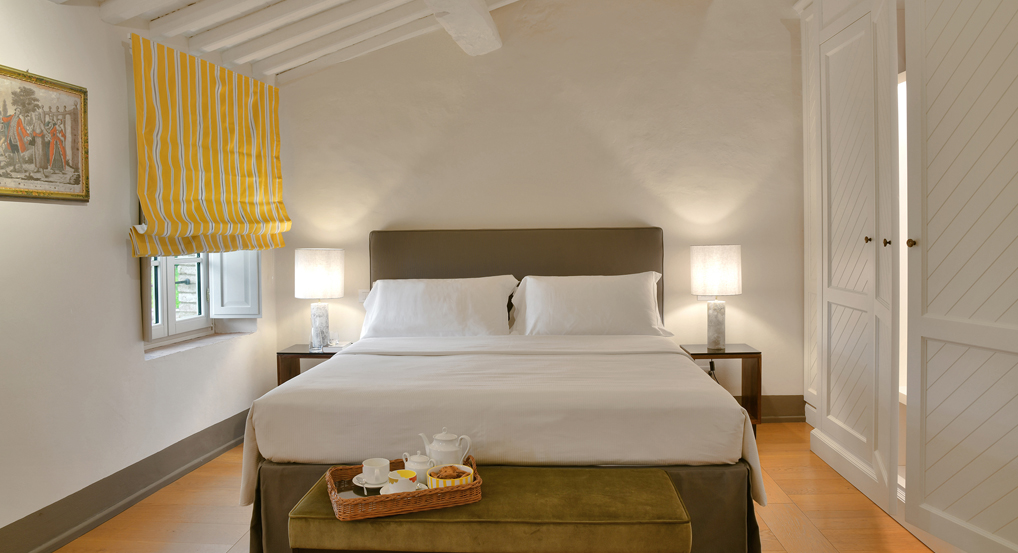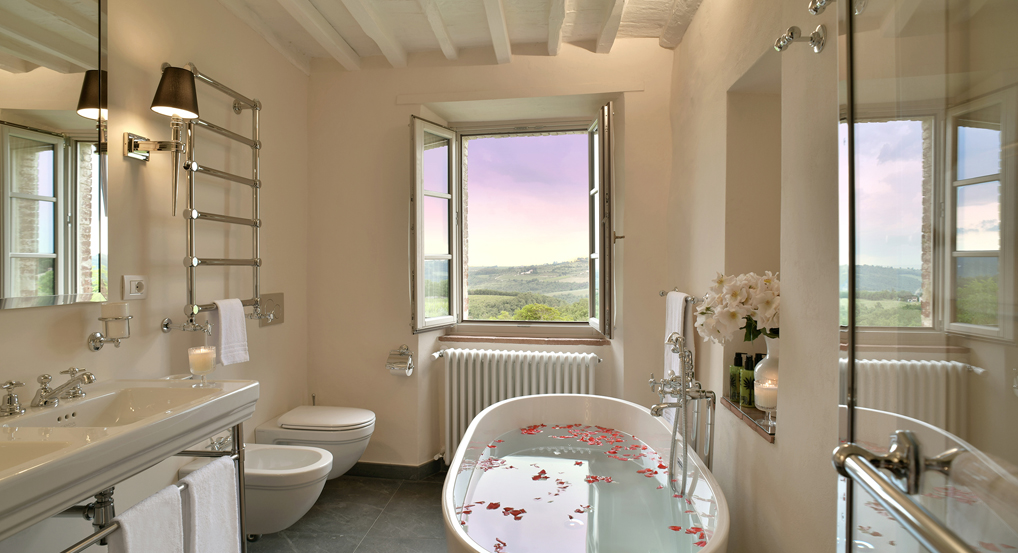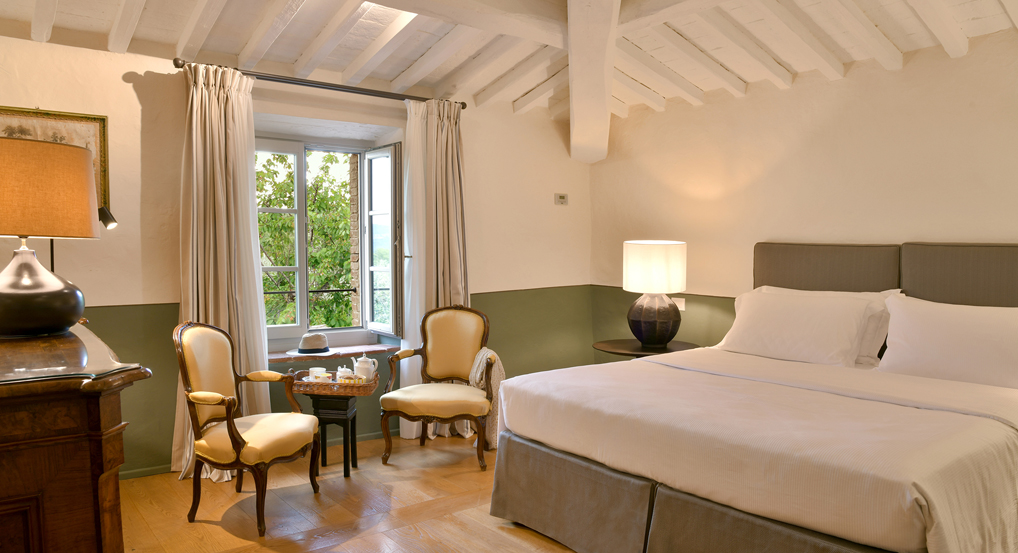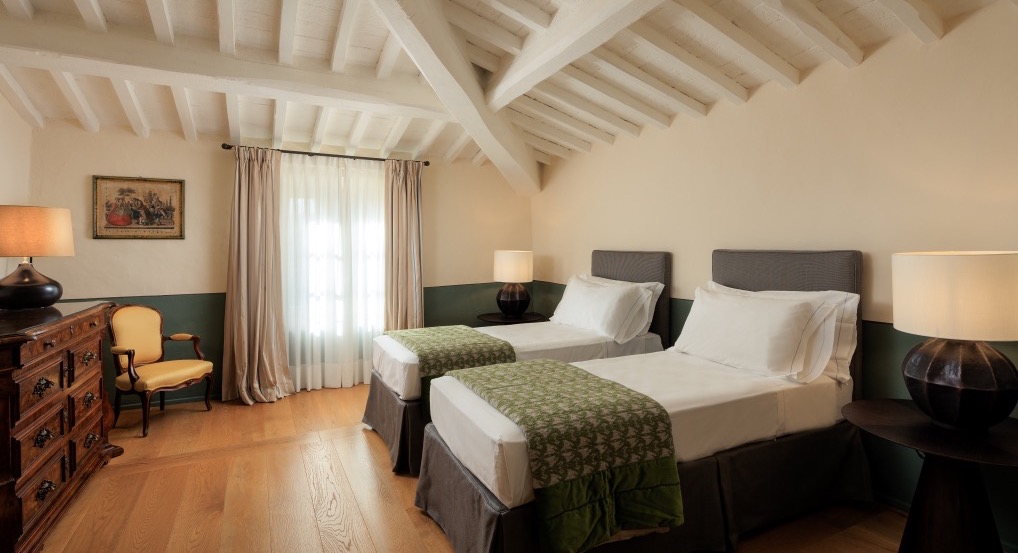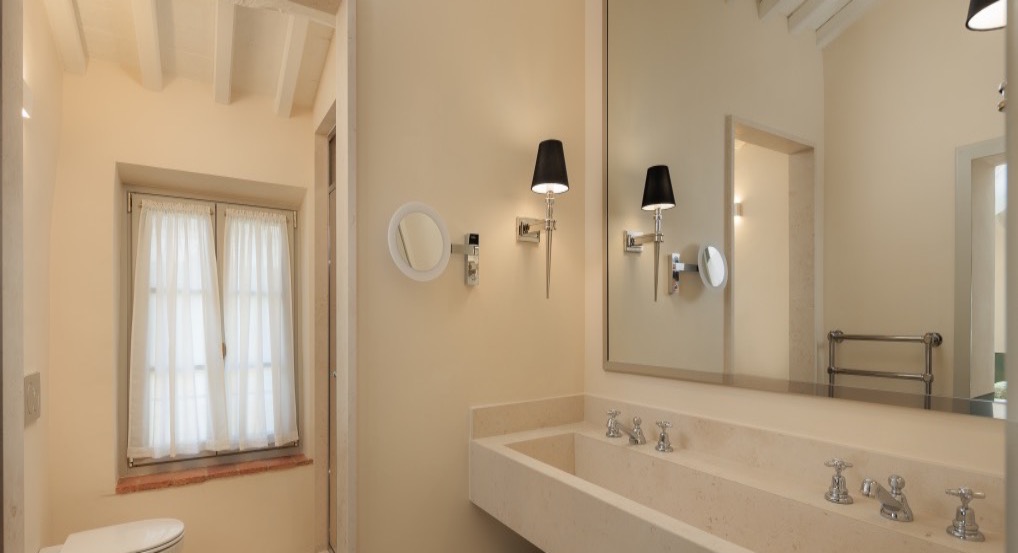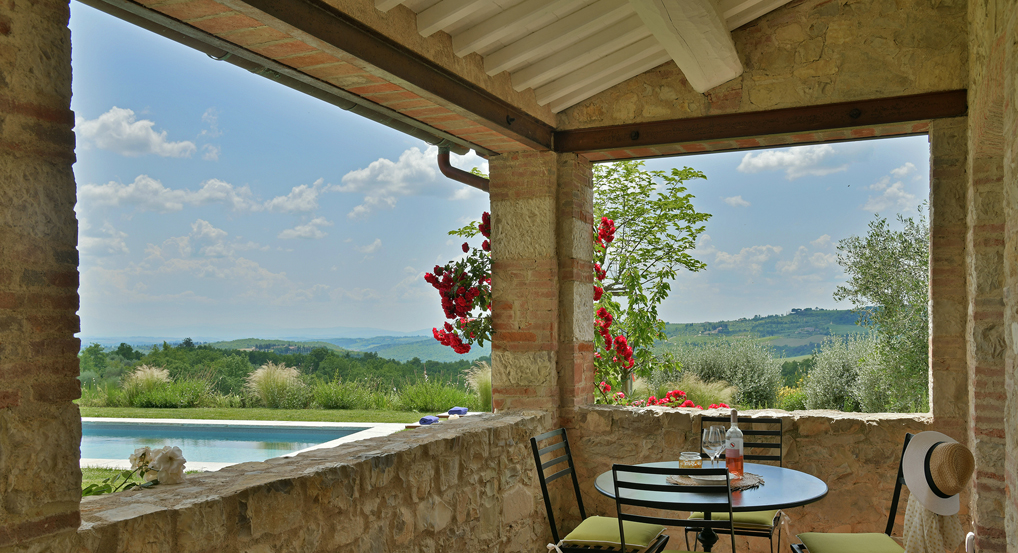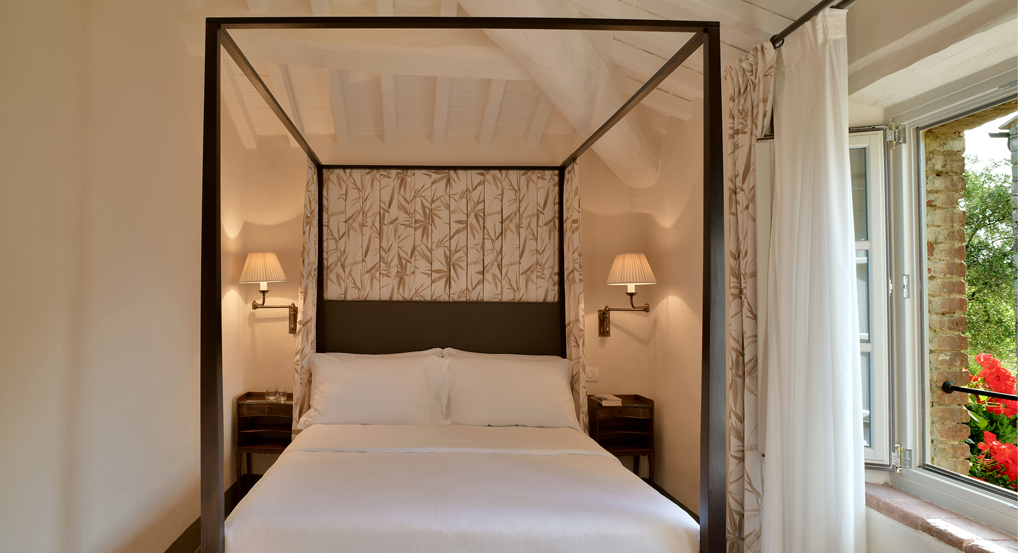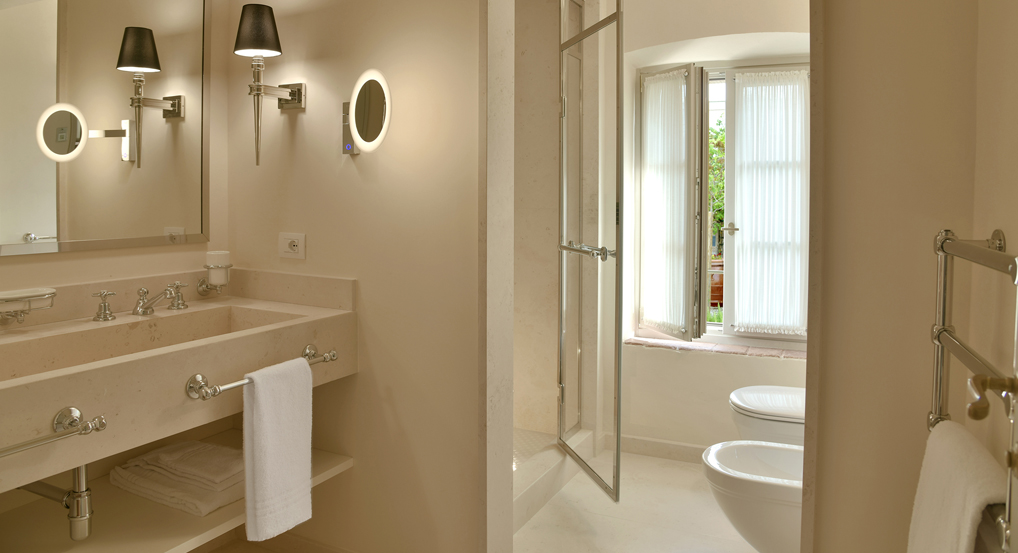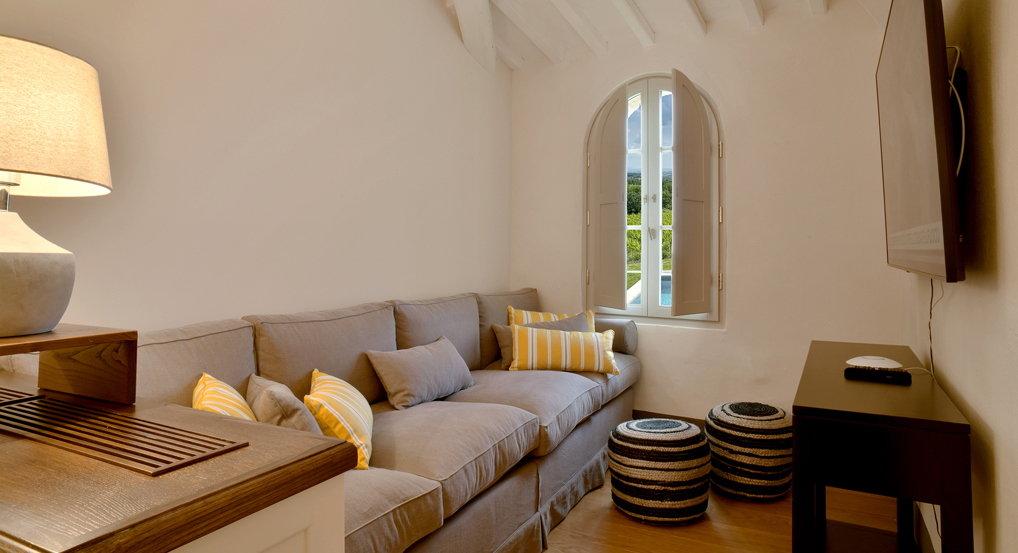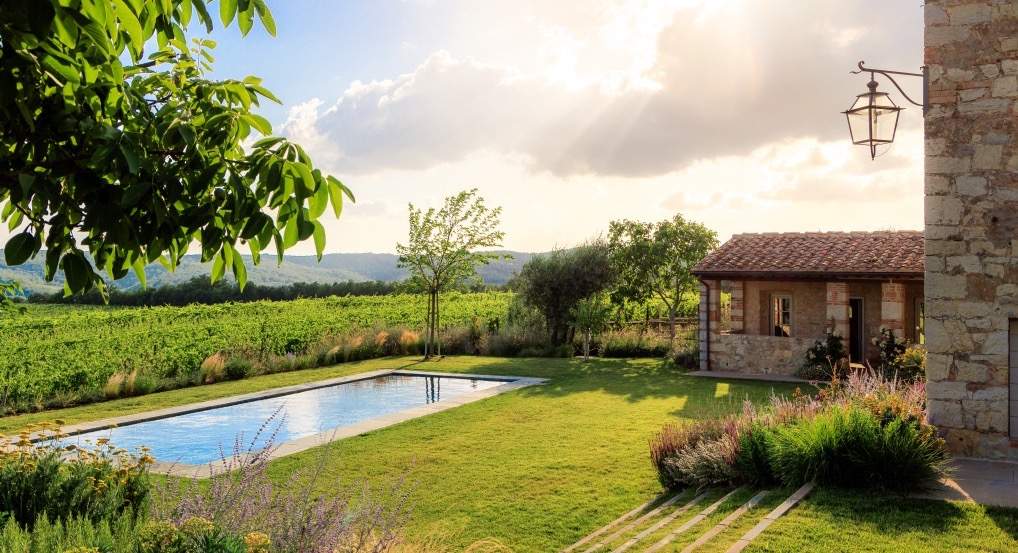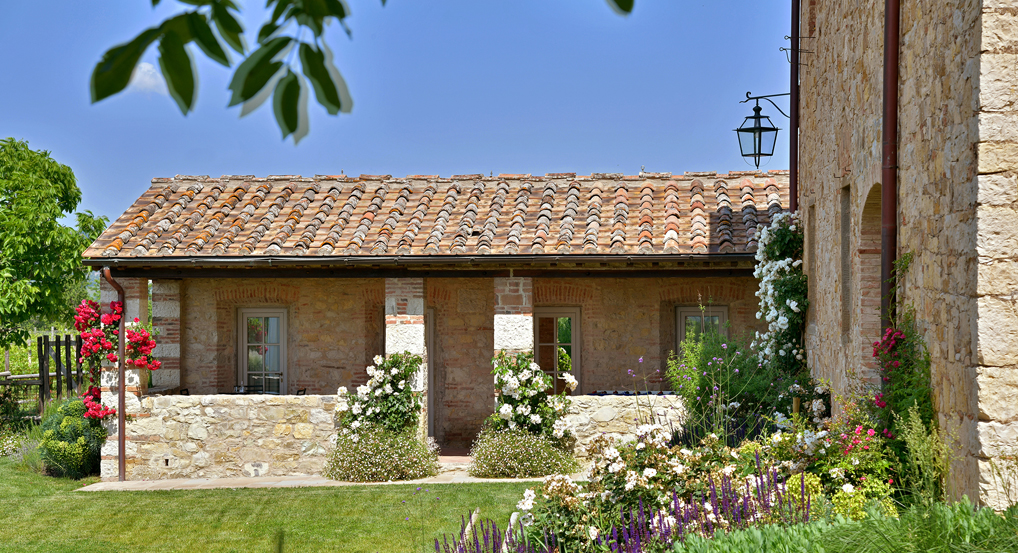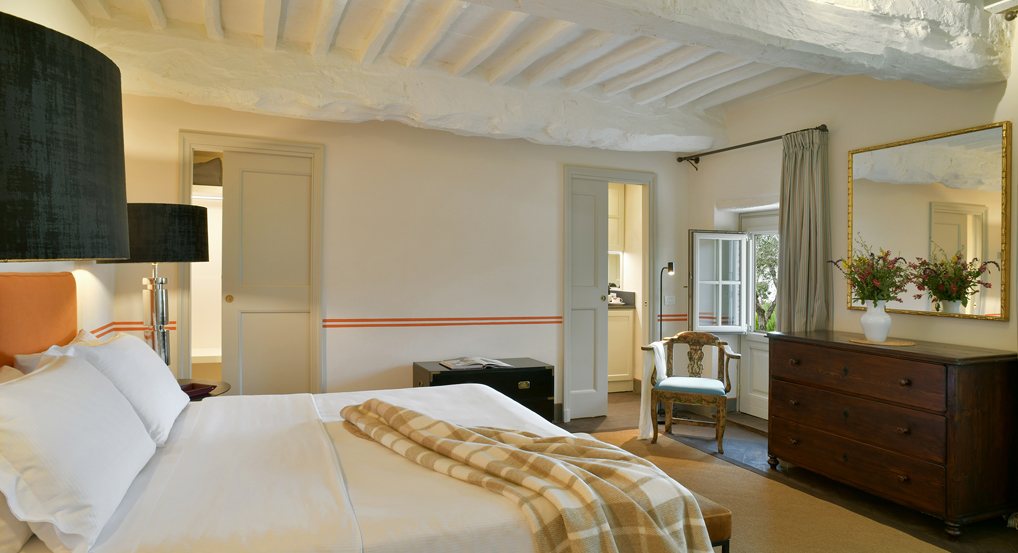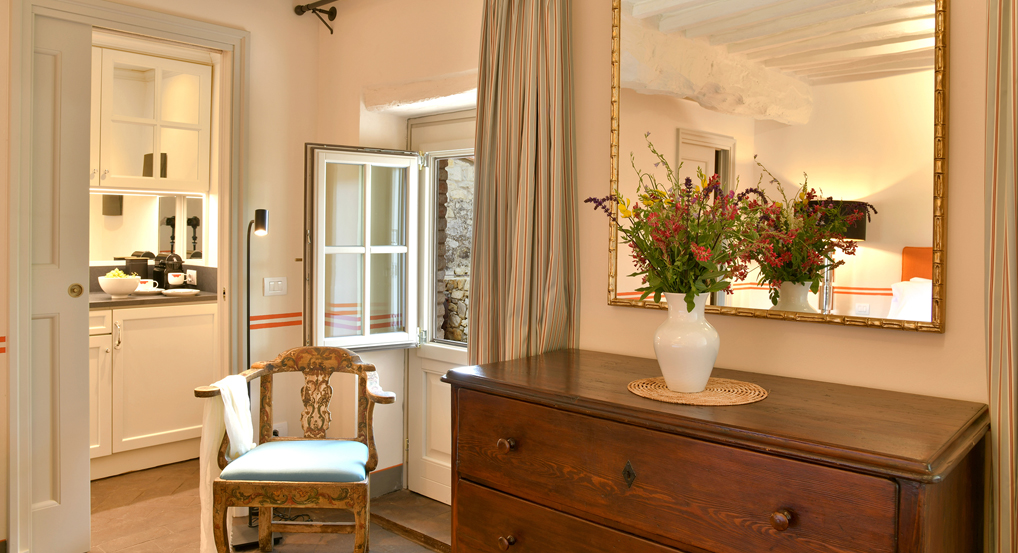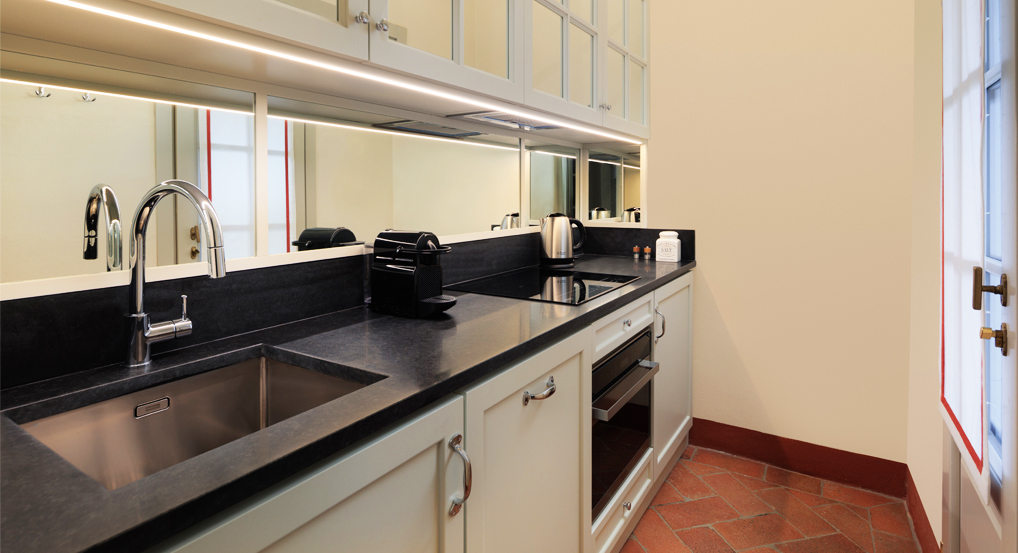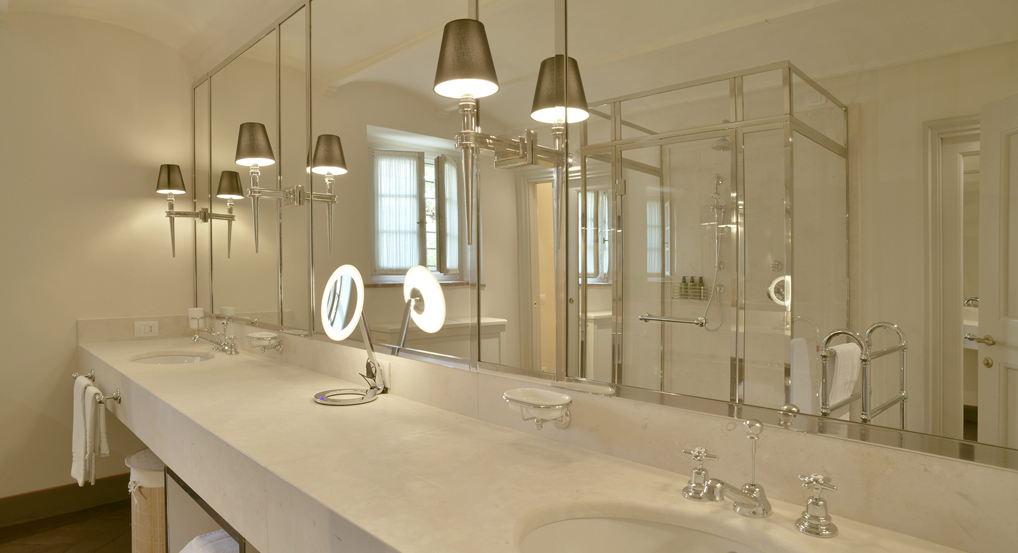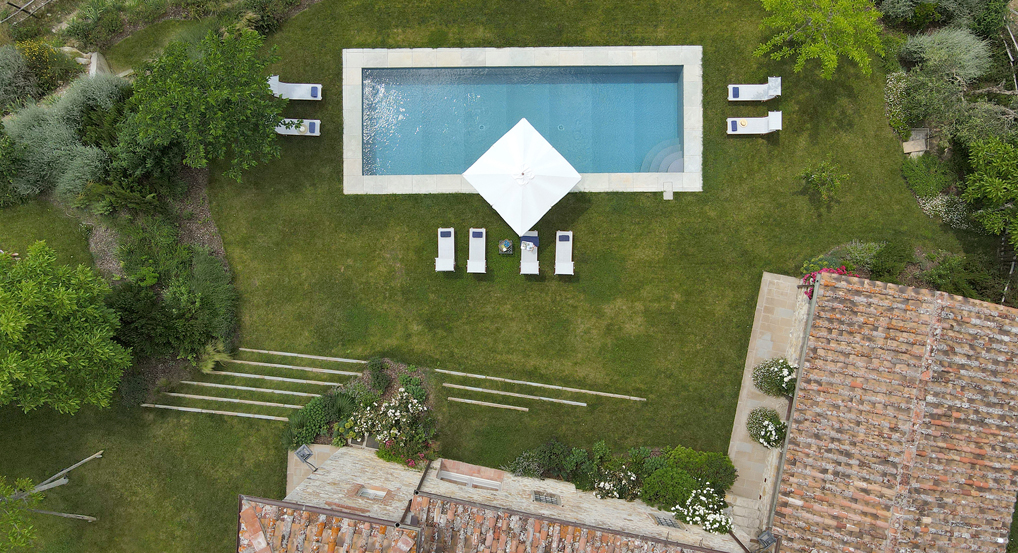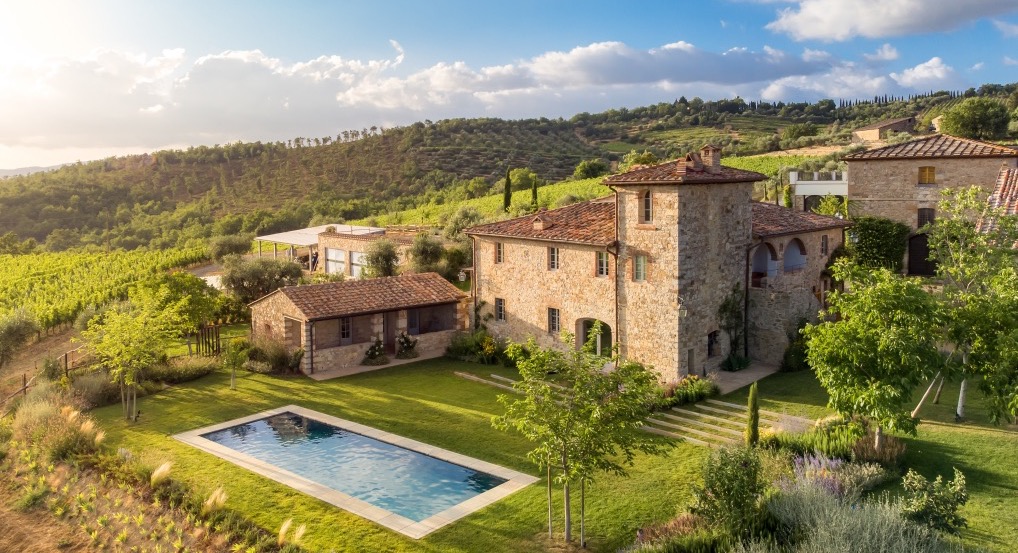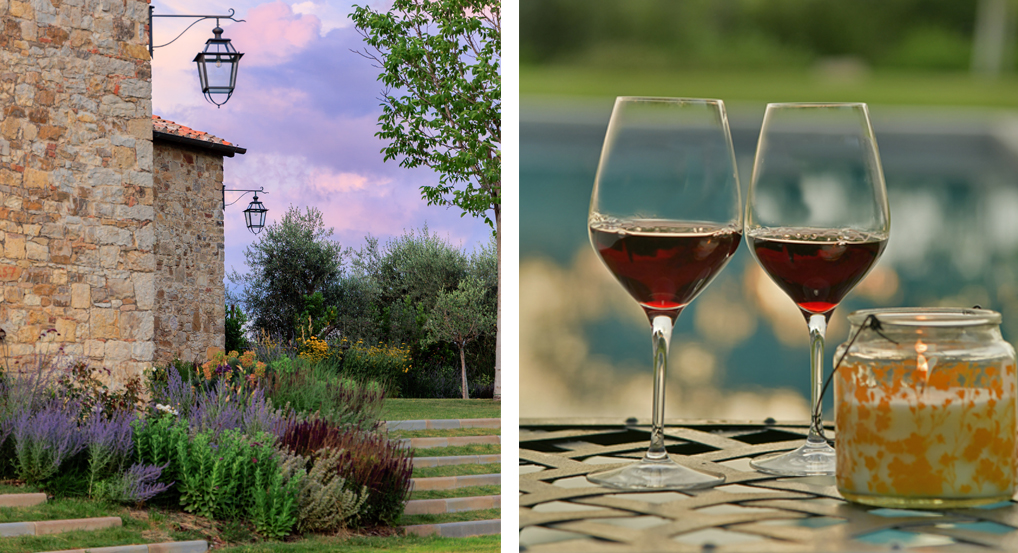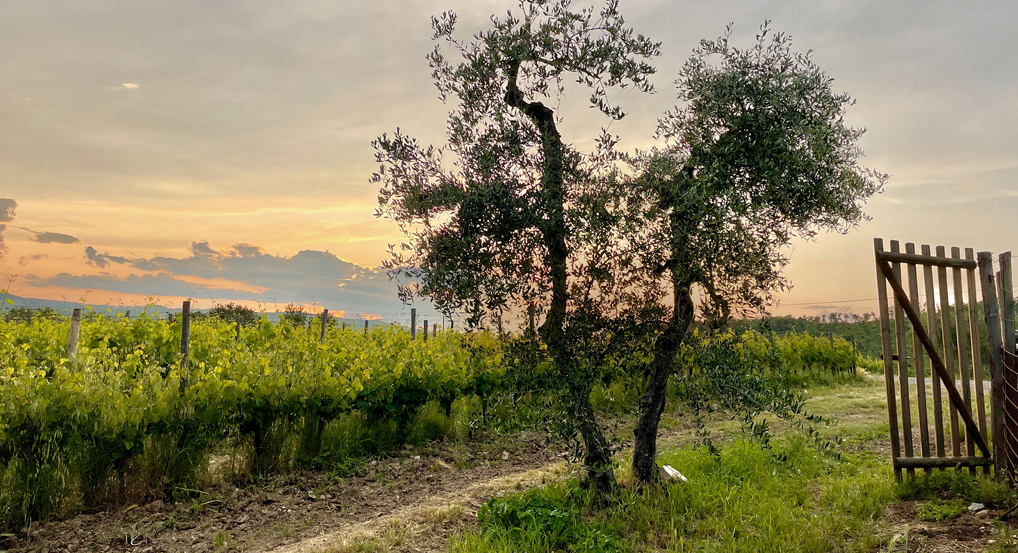• Wine tastings: Guests can arrange wine tours and tastings during their stay at the estate’s winery. These are offered at a special rate for guests and there is a discount on purchases. In a few minutes’ drive, you can reach other notable vineyards of Chianti Classico and beyond.
• Brolio Castle: Located a few minutes drive from the villa, Brolio is one of the oldest wineries in the world and is where the Chianti style of wine was “born.” This is the former home of the extremely wealthy Ricasoli family who has owned the estate since 1167. You can visit the castle and the gardens on your own or book one of their guided tours which includes the history of the estate, its wine-making facilities, cellars where Brolio’s wine is aged, and concludes with a wine tasting. The village a also a good restaurant, the Osteria di Brolio
• Castello di Ama: This tiny hamlet is the unexpected setting for museum-worthy contemporary art.The “town’s” handful of handsome buildings are now part of the Castello di Ama winery — one of Chianti’s finest — and house some of the works that the winery began commissioning over a decade ago. Today the collection consists of a dozen permanent pieces, including works by Anish Kapoor and Kendell Geers. Their two-hour guided visit includes the winery, the artwork and a tasting of the estate’s olive oil and wines (€35; book in advance).
• Radda: Majestically perched on a hill and surrounded by a sea of green, this alluring town’s position is truly spectacular. It has a medieval walkway and main square, where the Palazzo del Podestà displays its coats of arms and elegant arches. This palace had been the headquarters of the Chianti League, a military-political organisation that controlled this territory under Florence rule, for over four centuries. Opposite is the Neo-Romanesque Church of San Niccolò.
• Castellina in Chianti: A small medieval town nestled at the top of a rolling green hill at an altitude of 578m. Via Ferrucci, a pedestrian zone, is the main street and home to a number of restaurants, some with outdoor seating. Castellina is dominated by its early 15th century castle, home to the Archaeological Museum of Chianti Senese displaying ancient artifacts from area excavations, including many from the Etruscan settlements of the area. The parish church San Salvatore contains an important fresco of the enthroned Madonna attributed to Bicci di Lorenzo.
• Panzano: This picturesque town is well worth a wander and which features gorgeous views of the surrounding vineyards. Be sure to drift behind the square where you will find the old fortress and the Church of Santa Maria. The town is home to world famous butcher Dario Cecchini and his eatery, ideal for a hearty lunch. If you’re looking to do some shopping, track down Verso x Verso for custom designed leather goods. Just outside Panzano stands the beautiful 12th C parish church of San Leolino which houses precious pieces of sacred artwork.
• Greve in Chianti: A charming town with a delightful main square surrounded by porticos and pottery shops and other artisanal boutiques. On Saturdays this square hosts a weekly market and you can further enjoy the square’s ambiance over a delicious cappuccino and pastry at the Pasticceria Chianti.
• Montefioralle: A tiny hilltop hamlet of Montefioralle, worth the detour from Greve. Leave the car in the parking just outside the wall (piazza Santo Stefano) and walk the narrow cobbled streets of this small borgo that started its life as a castle. Get the camera ready for some very picturesque scenes.
• Badia a Passignano: The splendid monastery of Badia a Passignano takes the form of a quadrangular fortified monastic complex with corner towers. Towards the middle of the 15 C the convent was augmented by the addition of cloisters and a wall. Information regarding the year of the Badia’s foundation is unclear. In 1049 Badia passed into the Vallombrosano order, a reformed branch of the Benedictines. In 1545, the abbey became an important theological, literary and scientific study centre; the monastery chronicles report that Galileo Galilei taught mathematics here from 1587-1588. The monastery is still today occupied by the Valombrosiani monk community.
• The “Strada Chiantigiana“ (SR 222): An ancient road leading from Florence to Siena is full of spectacular scenery, historic sites and the romance of the Tuscany region of Italy. This back road runs through rolling hills overgrown with vineyards to Chianti’s small cities and towns such as Greve, Radda, and Gaiole.
• Hot Springs: In Tuscany there are several natural hot springs fed by volcanic water from 30 to 55 degrees Celsius. Some of them have been known from Etruscan and roman times like Calidario and Saturnia. You can add to your holiday in Tuscany a day in a thermal hot spring.
• San Gimignano is a small walled medieval hill town in the province of Siena, Tuscany, north-central Italy. It is mainly famous for its medieval architecture, especially its towers, which may be seen from several kilometers outside the town. The town also is known for the white wine, Vernaccia di San Gimignano, grown in the area.
• Siena: The Sienese have no doubt, their town is the most beautiful in all of Tuscany, if not all of Italy. Siena has remained a Gothic city. Renaissance, one of the major influences in Florence, hardly affected the urban development of Siena. The city unfolds around the main shell-shaped square called “Il Campo.” Twice a year the famous horse race known as the “Palio” takes place here. The narrow streets are lined with old shops and small cafes, while churches and museums are real treasures of the fourteenth century.
• Florence: The city lies on the Arno River and is known for its history and its importance in the Middle Ages and in the Renaissance, especially for its art and architecture. A centre of medieval European trade and finance, the city is often considered the birthplace of the Italian Renaissance; in fact, it has been called the Athens of the Middle Ages. It was long under the de facto rule of the Medici family. From 1865 to 1870 the city was also the capital of the Kingdom of Italy. The historic centre of Florence continues to attract millions of tourists each year and was declared a World Heritage Site by UNESCO in 1982.
